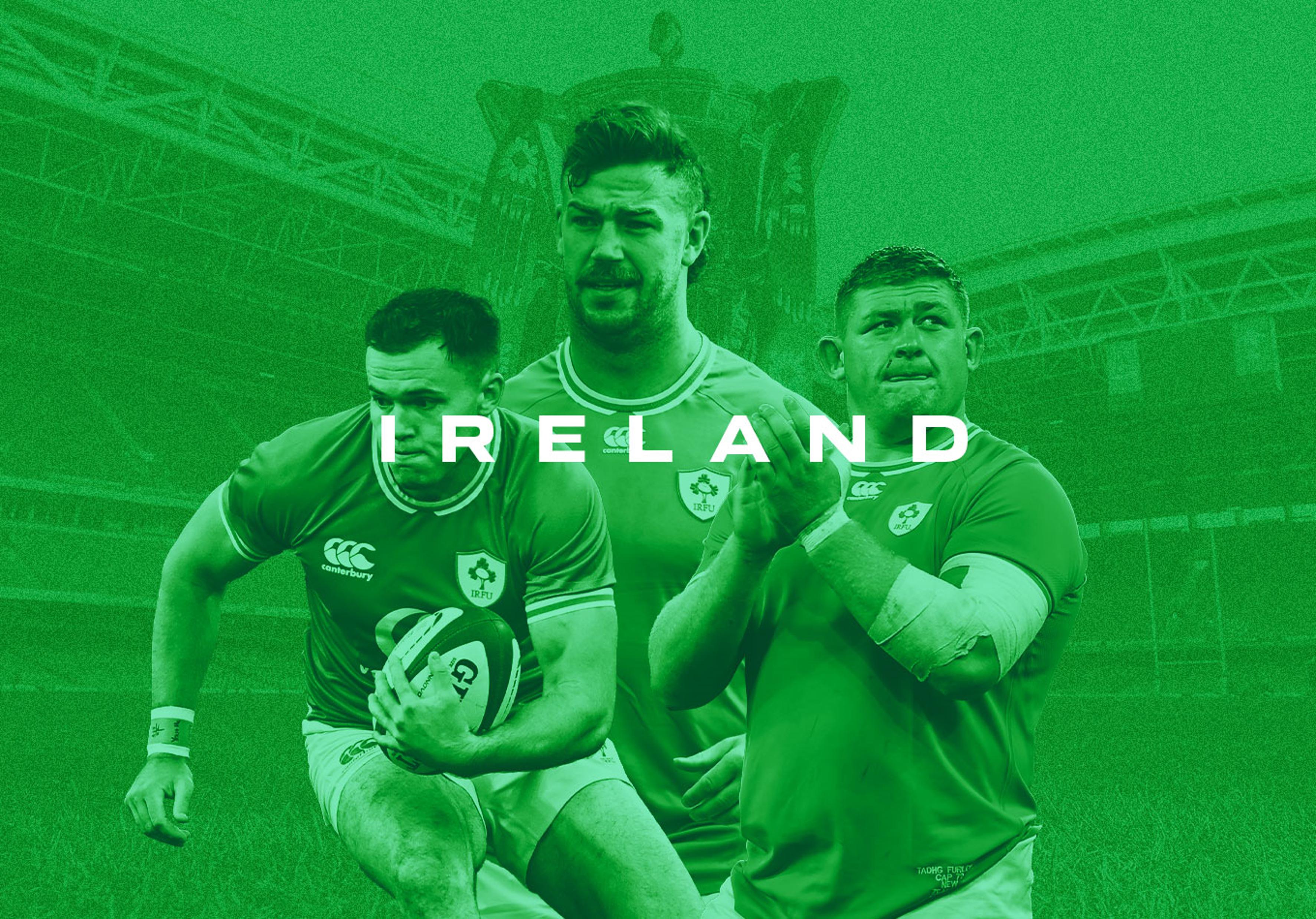As has so often been the case before, 2023 saw Ireland’s heroics in spring precede a fall in autumn. Once again, head coach Andy Farrell must pick his men up ahead of the 2024 Guinness Six Nations.
Traditionally, Ireland haven’t fared particularly well in Championships that have directly followed Rugby World Cups, finishing third in each of the last three such campaigns.
But given the high standards that the Lions’ coach-in-waiting Farrell has instilled since succeeding Joe Schmidt in 2019, you get the feeling that Ireland won’t settle for anything short of a repeat of last year’s Grand Slam and will be gunning to secure back-to-back crowns for just the second time in the Six Nations era (after 2014 and 2015).
Ireland have lost just two matches across their last three Six Nations campaigns, both against France, who they face in the opening battle of this year’s Championship. Should they secure a result in Marseille, they will certainly fancy their chances of treating Dublin to another St. Patrick’s weekend double celebration in March.
Playing Style
Ireland play at a ferocious tempo, often leaving their opponents breathless with the sheer speed of their approach. The Irish averaged more carries per game than any other team in the 2023 Six Nations and maintained an average attacking ruck speed well below the competition average (3.2s).
A strong emphasis is placed on ball retention in Farrell’s system, with Ireland averaging a higher share of possession per game than any other team in last year’s Championship (52.3%), a figure which rose to 55.1% in the World Cup and was only bettered by their quarter-final conquerors New Zealand.
They tend to remain compact in the middle channels, drawing defenders in before using their firepower out wide to devastating effect. Ireland kept the ball within 10m of the previous ruck on 55% of their attacking phases last year, the highest rate of any team. The ruthlessness of their wide players ensured that when they did get the ball to them, they made it count…
Strengths and Weaknesses
When assessing their strengths, it’s no surprise Ireland come into the Championships as joint-favourites with France.
Ireland are incredibly effective when it comes to defending their own try line, conceding an average of just 1.2 points per opposition entry into their own 22 during last year’s Six Nations – no other team averaged fewer than two points conceded per entry.
They attack their opponents’ try line just as effectively: 40.4% of their attacking 22 entries last year resulted in a try, which was also the best rate of any side.
Ireland are also a superbly well-disciplined side. They conceded fewer penalties than any other team in last year’s Championship (44) and were the only team not to receive a card of either colour.
There have, however, been worrying signs at the set-piece for Ireland, whose 83% lineout success rate in the 2023 Rugby World Cup was the worst of any Tier 1 nation and signified a drop-off from their 86% success rate in last year’s Six Nations, which was already the third lowest of any side.
Star Players
The retirement of stalwart fly-half Johnny Sexton is undoubtedly a blow to Ireland, but this is still a team filled with experience and star power. Eight different players have registered 2,000+ Test minutes under Farrell, with full-back Hugo Keenan having played the most (2,780).
Munster’s Jack Crowley seems to be the heir apparent to Sexton’s No. 10 shirt. The Cork native has the highest tackle success rate (91%) among fly-halves to make more than 25 hits in the URC this season and the third-best goal-kicking rate (88%) of the 24 players to attempt 10+ kicks at goal.
A man-of-the-match performance for Munster in their vital Champions Cup win over Toulon will give Farrell hope that Crowley can translate his domestic performances into the Six Nations cauldron.
While Ireland will also be without 2023 Player of the Championship nominee Mack Hansen, they can still rely on a plethora of quality in their back three, with Keenan and James Lowe, who were two of three players to gain 400+ metres last year (466 and 429 respectively, alongside Thomas Ramos) set for starring roles once again. Lowe was also the only player to make 10+ line breaks in the 2023 Six Nations (10) and made three times as many turnover-winning tackles as any other player (6).
Ireland’s Six Nations 2024 Fixtures:
2 February: France v Ireland – Stade Vélodrome, Marseille
11 February: Ireland v Italy – Aviva Stadium, Dublin
24 February: Ireland v Wales – Aviva Stadium, Dublin
9 March: England v Ireland – Twickenham Stadium, London
16 March: Ireland v Scotland – Aviva Stadium, Dublin
Ireland Six Nations Squad (as of 30 January):
Forwards:
Ryan Baird (Leinster) 15 caps
Finlay Bealham (Connacht) 36 caps
Tadhg Beirne (Munster) 46 caps
Jack Conan (Leinster) 41 caps
Caelan Doris (Leinster) 36 caps
Tadhg Furlong (Leinster) 72 caps
Cian Healy (Leinster) 125 caps
Iain Henderson (Ulster) 79 caps
Ronan Kelleher (Leinster) 26 caps
Jeremy Loughman (Munster) 4 caps
Joe McCarthy (Leinster) 5 caps
Peter O’Mahony (Munster) (captain) 101 caps
Tom O’Toole (Ulster) 12 caps
Andrew Porter (Leinster) 59 caps
James Ryan (UCD/Leinster) 59
Dan Sheehan (Leinster) 21 caps
Tom Stewart (Ulster) 2 caps
Nick Timoney (Ulster) 3 caps
Josh van der Flier (Leinster) 57 caps
Backs:
Bundee Aki (Connacht) 52 caps
Harry Byrne (Leinster) 2 caps
Craig Casey (Munster) 13 caps
Jack Crowley (Munster) 9 caps
Ciaran Frawley (Leinster) 1 cap
Jamison Gibson-Park (Leinster) 30 caps
Robbie Henshaw (Leinster) 62 caps
Hugo Keenan (Leinster) 36 caps
Jordan Larmour (Leinster) 30 caps
James Lowe (Leinster) 26 caps
Stuart McCloskey (Ulster) 15 caps
Conor Murray (Munster) 112 caps
Calvin Nash (Munster) 1 cap
Garry Ringrose (Leinster) 57 caps
Jacob Stockdale (Ulster) 37 caps
Enjoy this? Subscribe to our mailing list to receive exclusive weekly content. You should also follow our social accounts over on X, Instagram, TikTok and Facebook.
